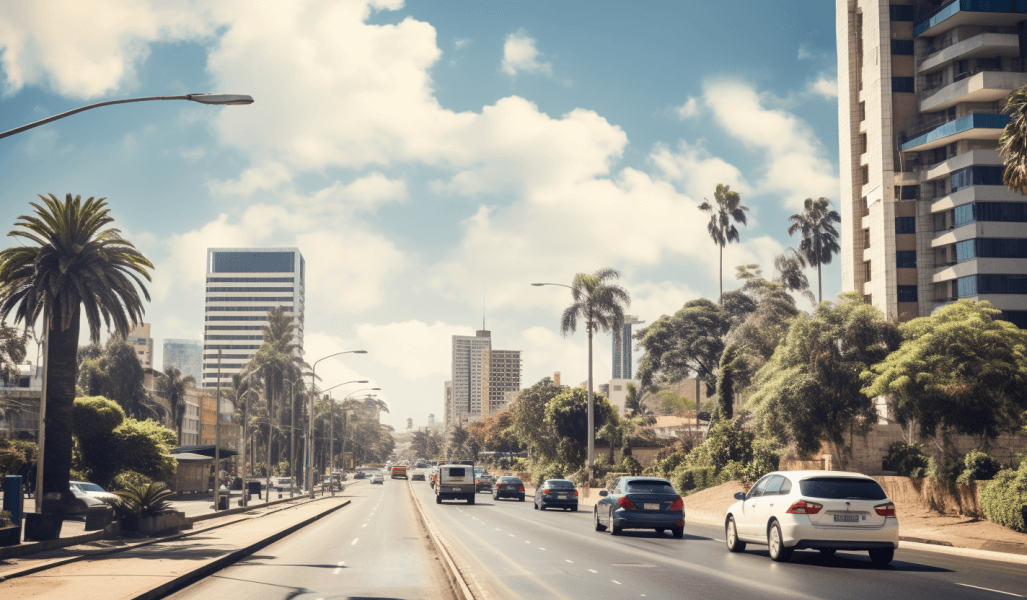
This list is compiled using the cost-of-living index. A cost-of-living index is a numerical statistic that is used to examine and compare the relative cost of living in various locations or regions. Its purpose is to estimate how much money is required to sustain a specific level of life, taking into account both fundamental necessities and discretionary spending.
This, in turn, assists us in determining how much money we require to sustain a particular way of life. This indicator also indicates how the price has evolved over time.
This cost of living encompasses all of the essentials we require, such as housing, food, transportation, child care, healthcare, and other necessities.
What are the Top 5 Most Expensive Cities in Africa?
1. Dakar, Senegal
Cost of living index: 47.2
Population: Approximately 3.4 million
According to recent data, Dakar is Africa’s most expensive city, with a cost of living index of 47.2. Dakar, is the capital of Senegal, a French-speaking country in West Africa, with a metropolitan population of approximately 3.4 million people. The city’s popularity stems from its appeal to expats looking for trade and investment possibilities.
Dakar also offers excellent hotels, resorts, nightclubs, and numerous recreational centers, making it an appealing location for travelers looking to enjoy the best of the continent. Dakar, being a commercial and tourist center, plays an important role in shipping for Senegal, as well as North and West Africa.
This important location, at the westernmost tip of Africa, allows ships traveling to and from Western Europe easy access.
2. Addis Ababa, Ethiopia
Cost of living index: 44.2
Population: Approximately 5.4 million
Ethiopia’s overall cost of living index is 44.2, despite its location in the Horn of Africa and membership in a country with a population of more than 110 million people.
Ethiopia’s capital, Addis Abeba, is not only one of Africa’s oldest towns, but it is also historically significant as the seat of the old Ethiopian Empire. The city exudes richness, and after learning about its rich history and appreciating its prominent structures, the decision to visit becomes obvious.
Addis Abeba, being one of Africa’s most popular attractions, invites travelers from all over the world. The city is home to a number of notable hotels, many of which are owned by well-known names in the hospitality business.
Because of the city’s tourism popularity, there is a larger demand for high-quality items, adding to a relatively higher cost of living. However, this creates job opportunities in the services sector, transforming Addis Ababa into a vibrant commercial city with a thriving economy.
Food prices in Ethiopia are relatively high due to factors such as poor infrastructure and limited market access. Another notable expense is housing, which is driven by a high demand for urban housing that frequently exceeds the available supply, resulting in higher rent rates.
3. Abidjan, Ivory Coast
Cost of living index: 43
Population: Approximately 5.6 million
Abidjan, sometimes referred to as the unofficial capital of French West Africa, retains close links with France, hosting many French firms and entrepreneurs. The port of the city acts as the principal center for raw materials departing and finished commodities arriving in French West Africa, including those bound for neighboring nations.
In the western part of Africa, Ivory Coast is witnessing significant economic expansion, accompanied by a growing middle class. It is Africa’s 19th most expensive country, with a cost of living index of 43 and a local purchasing power of 7.8.
Abidjan has a thriving leisure sector that includes gorgeous beaches, upmarket hotels, diverse food, and a dynamic nightlife.
The city’s strong real estate and hospitality sectors cater to a steady stream of business-minded individuals. Housing and hospitality are both expensive. Abidjan, with its many cultural offers and vibrant nightlife, is a must-see destination for French speakers.
4. Harare, Zimbabwe
Cost of living: 41.3
Population: Approximately 1.5 million
Harare, Zimbabwe’s capital, is notorious for its high cost of living, which is driven by economic issues. It is the world’s most costly country to borrow money in, with a stunning 150% interest rate. The rate was even greater in the first half of 2022, at 200%. Despite recent inflationary declines, Zimbabwe confronts economic challenges, including currency volatility.
With a local buying power of 18.7, the cost of living index is 41.3. In this atmosphere, many people struggle to afford basic essentials. The city, which covers an area of 960.6 km2, is a center for trade, tourism, and cultural events such as the Harare International Festival of the Arts. It also houses a number of diplomatic embassies, demonstrating its importance in Southern Africa.
5. Johannesburg, South Africa
Cost of living index: 40.5
Population: Approximately 6.1 million
Despite being Africa’s wealthiest metropolis, Johannesburg maintains a relatively low cost of living. Johannesburg has a cost of living index of 40.5 and a population of approximately 6.1 million people.
Originally founded on gold, the city has since expanded into mining, finance, hotel, entertainment, and services. Johannesburg is a modern metropolis with all the luxury one could want.
While it is not the cheapest city on the continent, it is more affordable than many others. Johannesburg is a global gold center with a thriving fashion, banking, and wine industry. The city’s hotels are of the highest caliber, and its sandy beaches are renowned for a variety of sports. Johannesburg caters to a varied variety of residents and visitors, whether you’re a big spender or on a budget.
ncG1vNJzZmivp6x7qLTGqKqsoaBjsLC5jqamrKxdmsWxsc2soK%2BdXZi2tbXErGSipl2Ws7O1wppm